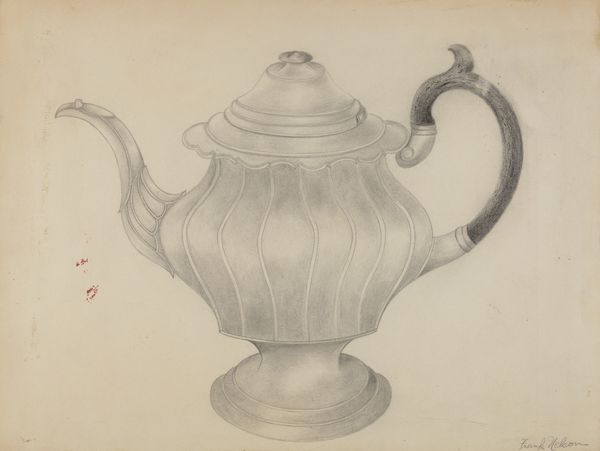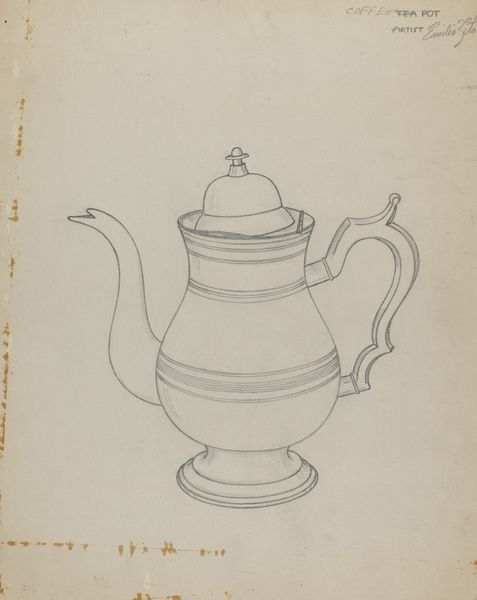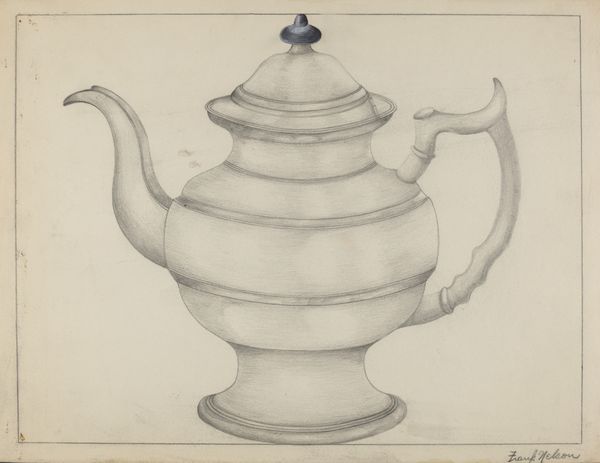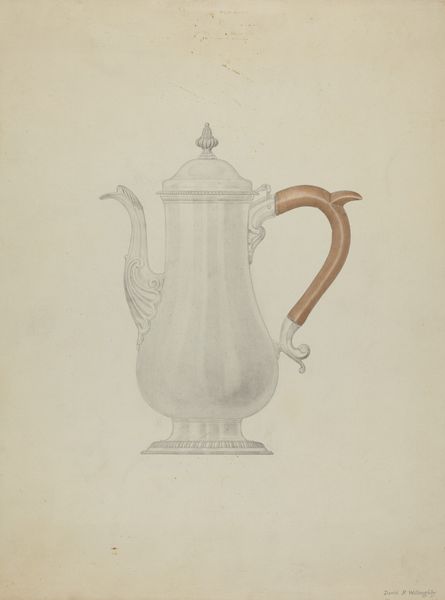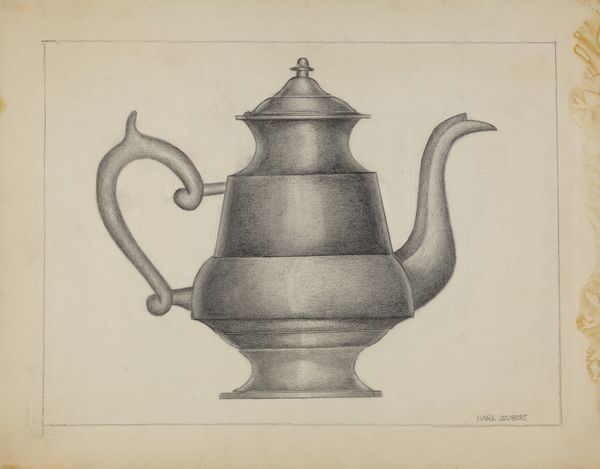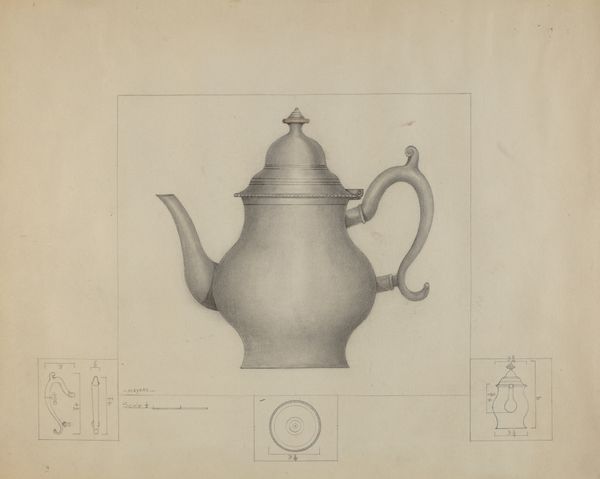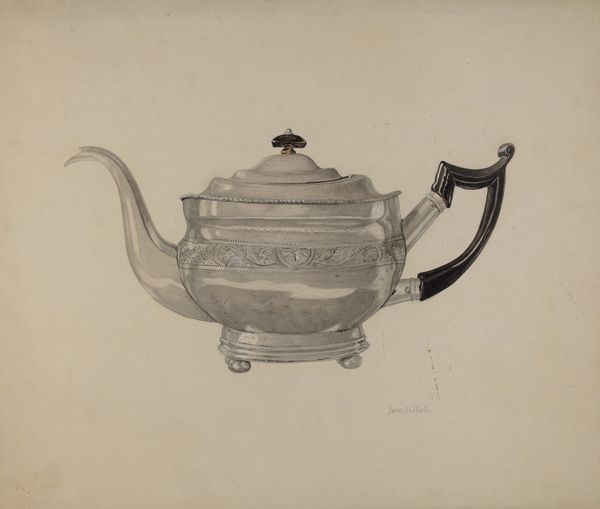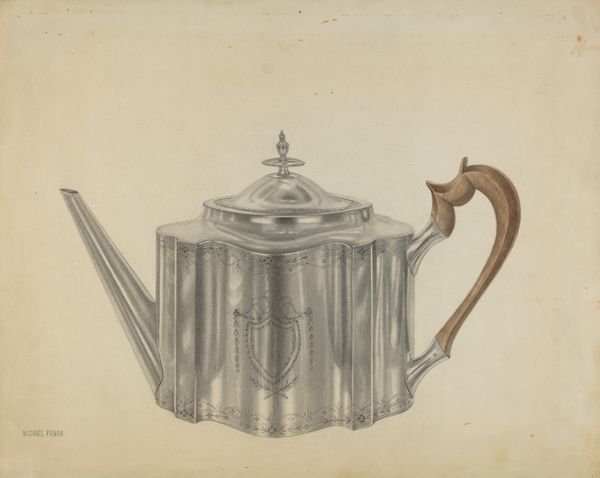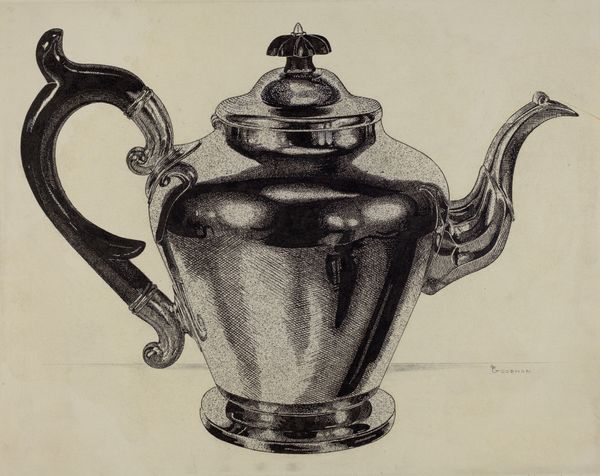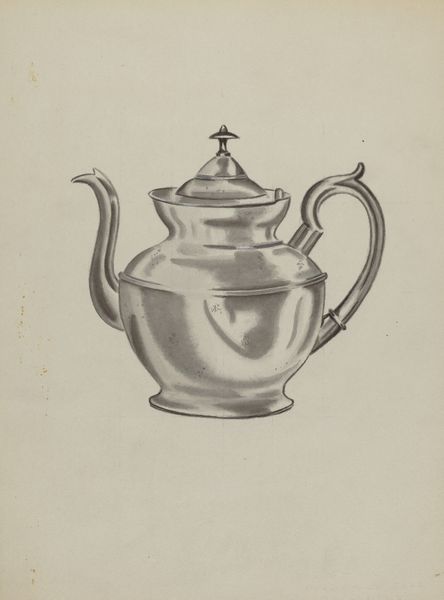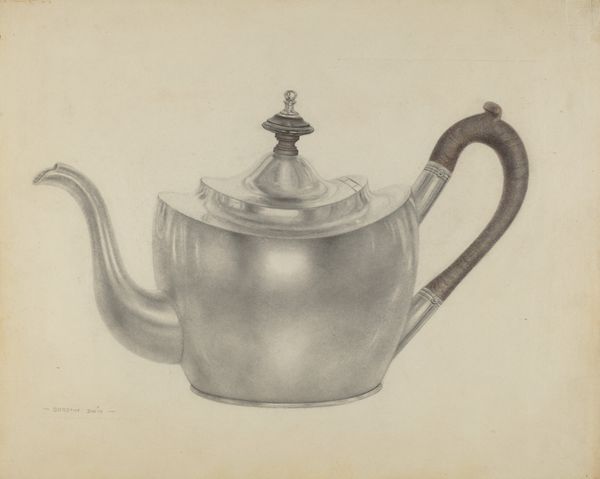
drawing
#
drawing
#
geometric
Dimensions: overall: 31.4 x 36.4 cm (12 3/8 x 14 5/16 in.) Original IAD Object: 8 3/4" high; 7" in diameter
Copyright: National Gallery of Art: CC0 1.0
Curator: Standing before us, we have Harry Goodman's drawing "Pewter Teapot", created circa 1937. It’s a striking graphic study rendered, rather plainly, in drawing. Editor: There’s a pleasing clarity. Spare lines define a gently bulging, almost classical form—evoking warmth and maybe tradition itself—yet something feels stark and deliberately understated. Curator: Indeed. Look closer. It’s not merely a rendering of a functional object; it’s a representation imbued with symbolism. Teapots have long been associated with domesticity, social gatherings, and ritual. Given its time, might it be gesturing to the everyday during tumultuous years? Editor: That's certainly one way to consider it. We know design from this period embraced streamlining; this teapot encapsulates this. Also consider the political symbolism; Britain has its historic associations with tea, after all. But why choose such a modest subject during such high times and high stakes? Curator: Consider pewter. Not as flashy as silver, not as common as porcelain, this choice conveys certain… quiet respectability and unpretentious grace. What do you feel the geometric shapes, like the base, represent? Editor: Geometry grounds us in reality, suggesting a conscious focus on functionality and modern design. The lack of colour suggests it is not a grand statement, but one meant for personal enjoyment. I find this echoes British sensibilities during that period. Curator: You feel that the aesthetic is… deliberately British? It presents familiar forms with restrained detail, which offers comfort but also reflects social tension of the time. I wonder what role the symbolism plays in a global world moving to war. Editor: Absolutely, especially if this image resonated during wartime, evoking simpler pleasures amidst disruption. I also wonder whether the very idea of “home” shifts when seen alongside global crises. It can act as both comfort object, and a relic of days long gone by. Curator: A poignant notion—how a simple image captures this dialectic tension during those times. Thank you for helping tease that out, there's plenty here. Editor: And thank you, my reading shifts a bit with each look; which tells me, this holds something significant for our modern experience.
Comments
No comments
Be the first to comment and join the conversation on the ultimate creative platform.
